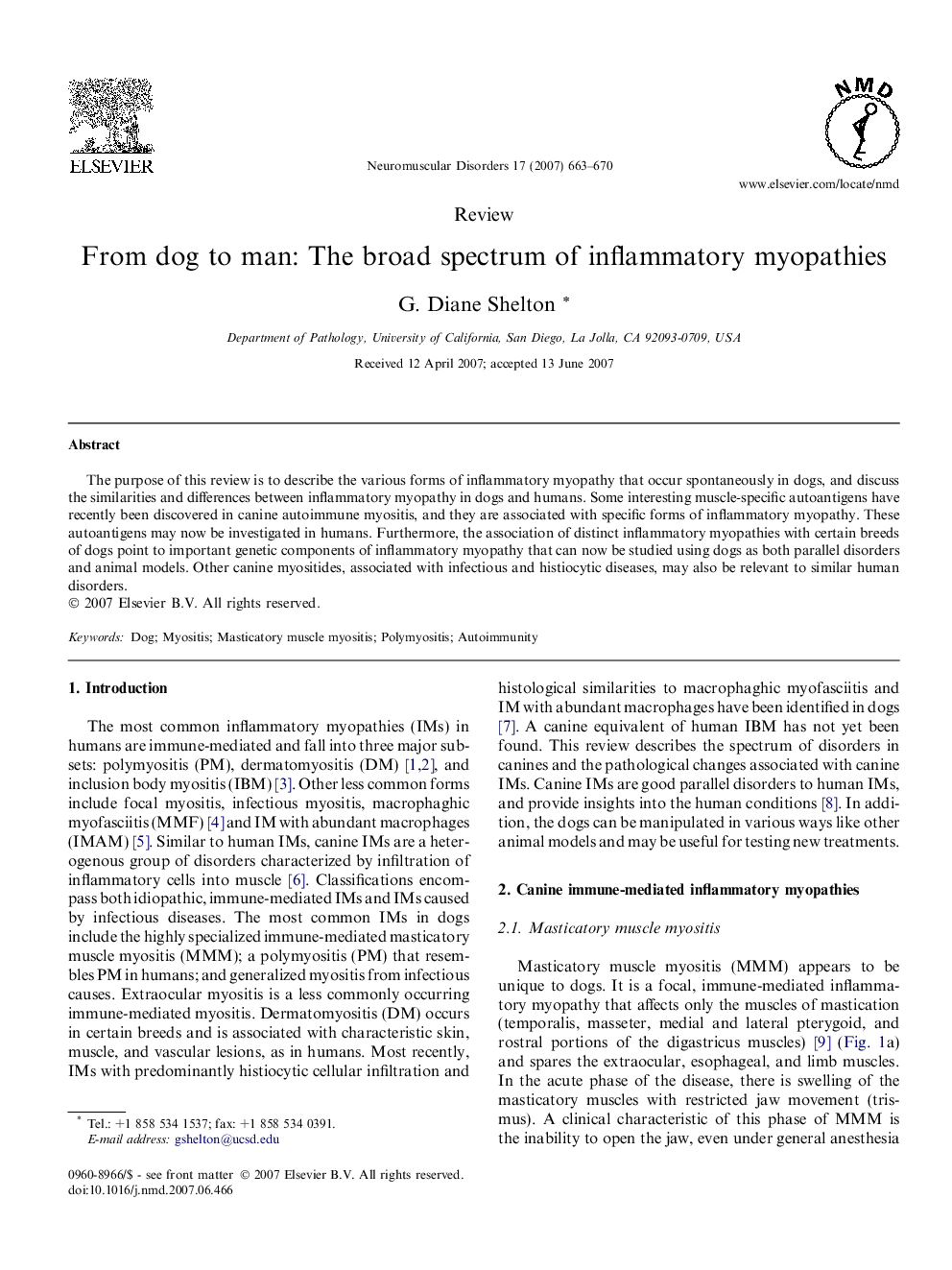| Article ID | Journal | Published Year | Pages | File Type |
|---|---|---|---|---|
| 3080401 | Neuromuscular Disorders | 2007 | 8 Pages |
Abstract
The purpose of this review is to describe the various forms of inflammatory myopathy that occur spontaneously in dogs, and discuss the similarities and differences between inflammatory myopathy in dogs and humans. Some interesting muscle-specific autoantigens have recently been discovered in canine autoimmune myositis, and they are associated with specific forms of inflammatory myopathy. These autoantigens may now be investigated in humans. Furthermore, the association of distinct inflammatory myopathies with certain breeds of dogs point to important genetic components of inflammatory myopathy that can now be studied using dogs as both parallel disorders and animal models. Other canine myositides, associated with infectious and histiocytic diseases, may also be relevant to similar human disorders.
Keywords
Related Topics
Life Sciences
Neuroscience
Developmental Neuroscience
Authors
G. Diane Shelton,
